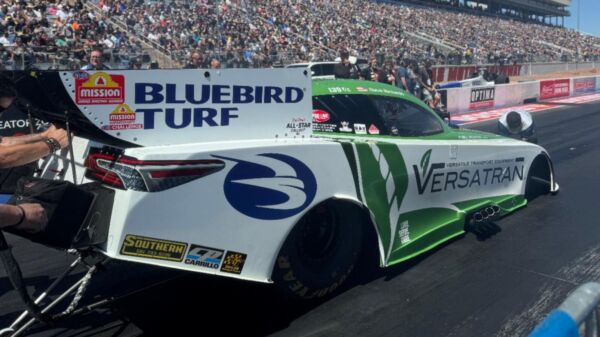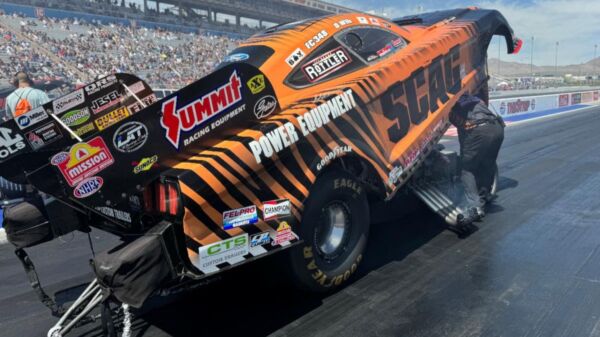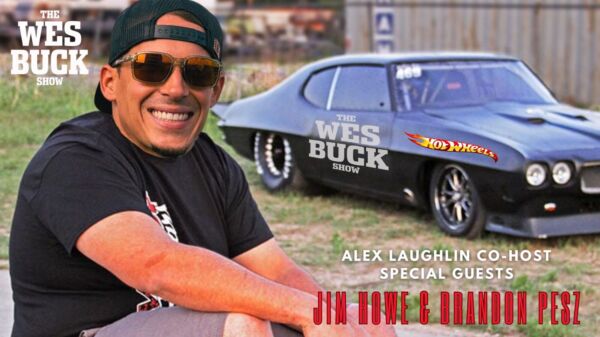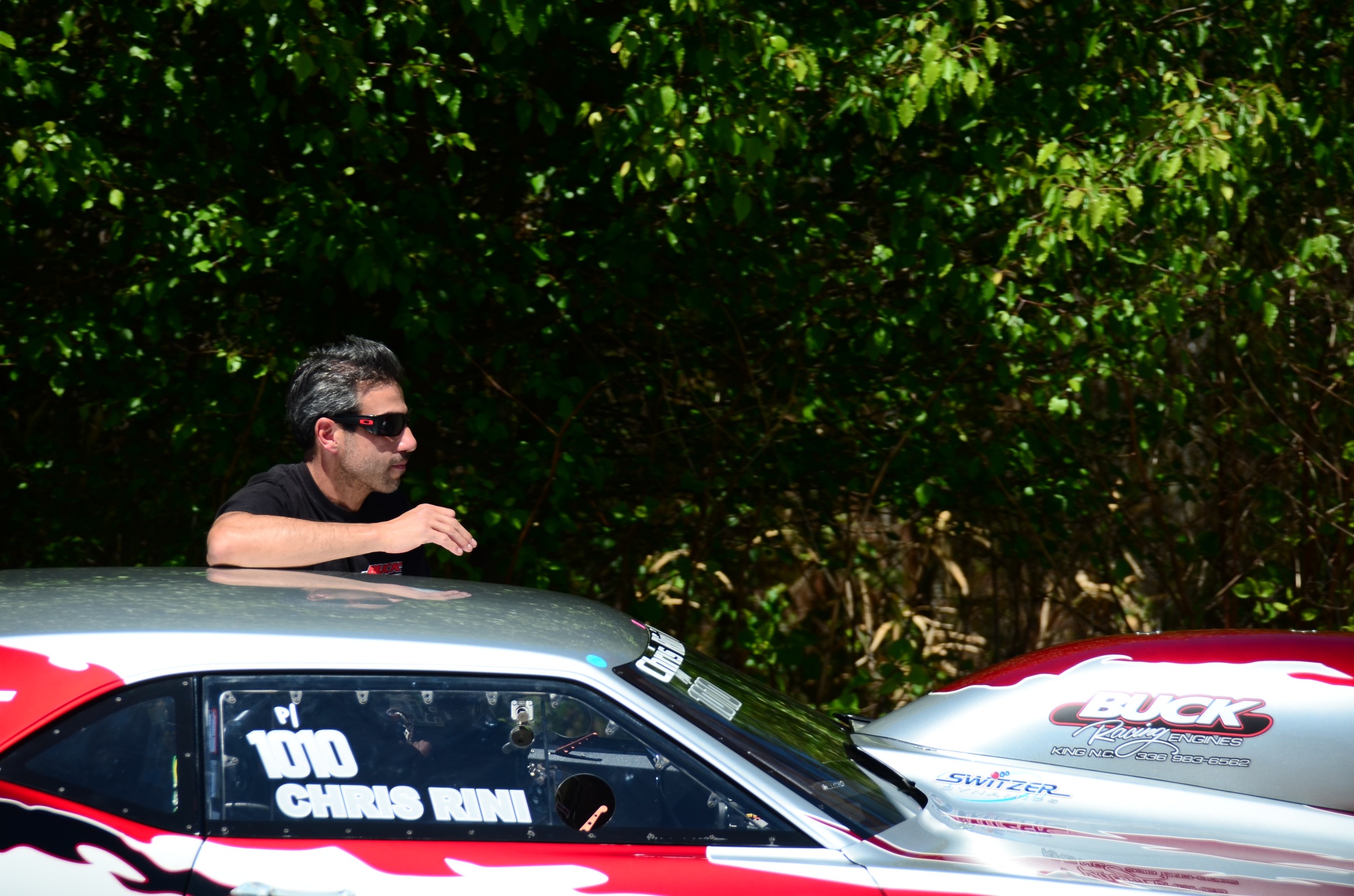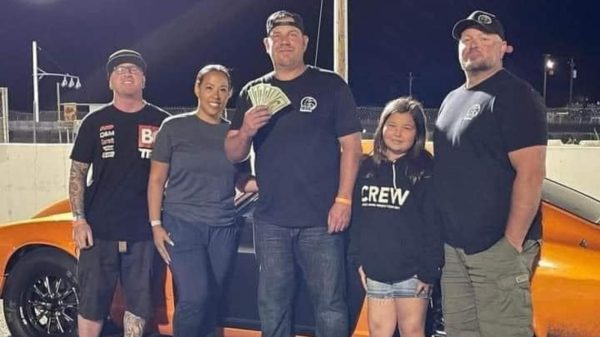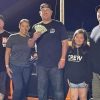Whenever Chris Rini rolls into the water box, just moments away from doing his burnout, most any track announcer will usually mention two things he has become somewhat famous for in recent years. The first notable footnote in Rini’s introduction will be that he’s clearly among the most successful drag racers to ever come out of New York—no question. But even more remarkable is a near-inconceivable tale that involves a ride on board a commercial jet liner, a ride that Rini admits forever changed his life.
[Editor’s Note: The story originally appeared in DI #100 in June of 2015.]
Born and raised in the Empire State, Rini eventually started a highly successful automotive business there from scratch. Being a native New Yorker, consequentially, is how most people identify him, which is why he can’t help but laugh as he adamantly describes a strong affinity for the Deep South. In a thick and unmistakable northern accent, Rini reveals a yearning that’s largely gone unpublished.
“Even though I’ve lived in New York my whole life, I’m as country as Hickory, North Carolina,” he insists with a laugh, referencing a town nationally known as the “Birthplace of the NASCAR Stars.” Plus, his southern belle girlfriend, Emily, also lives there, so between romance and racing, Rini frequents the south quite often.
Still, growing up in New York isn’t often viewed as the likeliest of places to fall in love with drag racing and hot rods, yet Rini somehow managed to be bitten by the bug nonetheless. “My brother, David, was a huge Mopar fanatic and I sort of followed that same path,” he explains.
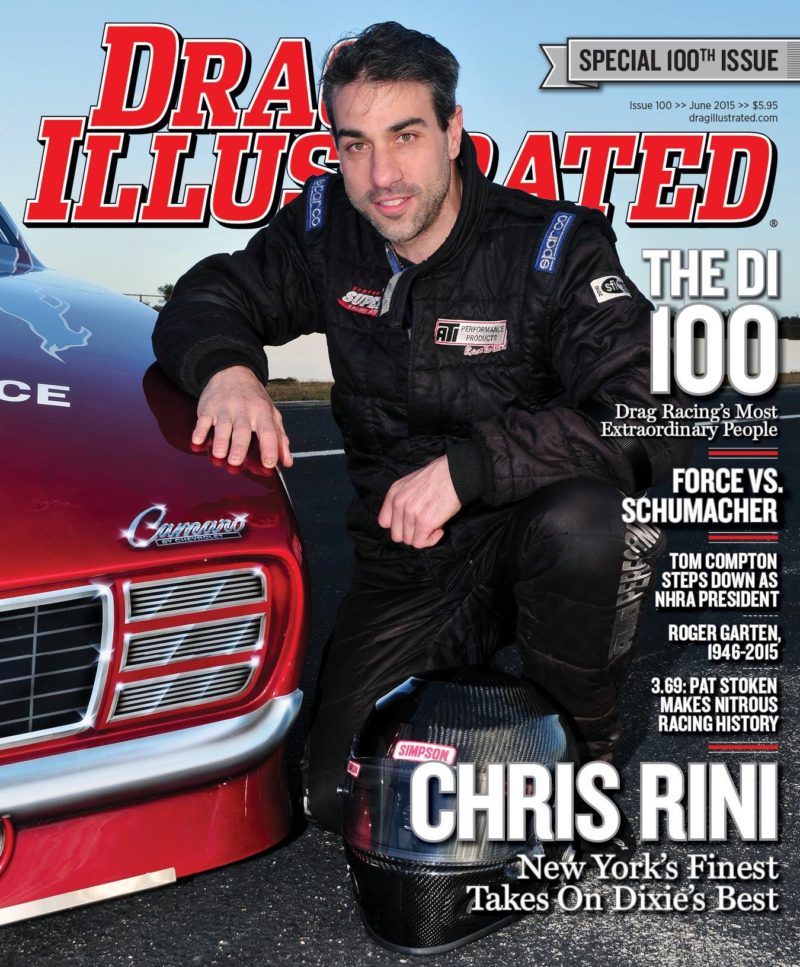 Their father also owned an auto repair shop in the Bronx and Rini remembers pumping gas and learning how to fix cars at a very young age. The family business meant so much more to him than just a means to carve out a living, though, as Rini was completely mesmerized by muscle cars—especially those of Chrysler distinction. By the time he was 15 years old he had earned enough money working at his dad’s garage to buy his first car, although it was hardly road worthy when he first forked over the cash.
Their father also owned an auto repair shop in the Bronx and Rini remembers pumping gas and learning how to fix cars at a very young age. The family business meant so much more to him than just a means to carve out a living, though, as Rini was completely mesmerized by muscle cars—especially those of Chrysler distinction. By the time he was 15 years old he had earned enough money working at his dad’s garage to buy his first car, although it was hardly road worthy when he first forked over the cash.
“It was a hunk of junk is what it was,” Rini laughs, describing the ‘68 Charger RT that captured his imagination. “I had big plans of making that car something special, but first I had to tow it home with a rope!”
Rini loved that car so much, in fact, he enrolled in a two-year course at a technical school just so he could learn how to do body work and restore the old beater. Those two years of earnestly studying auto body repair developed into a love for the whole process and still at a young age Rini began dabbling in the craft to create a revenue stream. He soon embarked on repairing many cars in his neighborhood—except for the one he intended to fix first; his own!
Regardless, throughout his teen years Rini was big into the local car show scene, and especially the area Mopar shows. The perfectly straight bodies and pristine paint jobs just seemed to strike a chord within the young hot rodder and his first exposure to drag racing was right around the corner. “Me and a buddy went to Englishtown for a Mopar show when I was 16 and that’s actually the first drag strip I ever went to,” Rini recalls. “They did have drag racing that day and I watched it for a couple minutes, but it really didn’t grab my interest, to be honest.”
It would be years later before he ever went back to the drag strip, but when he did, Rini returned to E-town for the annual NHRA Summernationals. “I still wasn’t extremely interested in the whole thing, but I do remember liking Pro Stock best of all because they looked like real cars and you could hear the guys going through the gears,” he says. Regardless, Rini hardly viewed drag racing as something he would ever do; in fact, it would be nearly a decade before he discovered drag racing from the standpoint of actually wanting to participate.
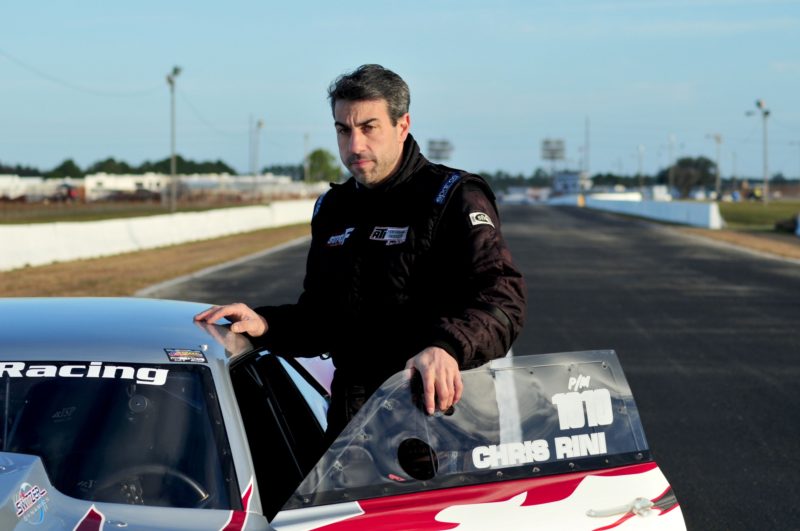
In 1991, at age 20, Rini took his love of auto body repair to a professional level, launching Chris’ Automotive Center. His dad signed his first lease because the property owner thought Chris was too young to be going into business for himself. “I opened my first shop in the town of Brewster on August 8th, 1991 and by December 8th I was ready to close my doors,” he admits. “I had never worked so hard in my life, and for less money than I was making working for someone else.”
By the time he paid the bills and shook out what was left in the bank account Rini says he didn’t have a lot to live on, but he was determined to build a successful business. “For the next 10 years I hardly even looked up. All I did was work, 10- to 15-hour days, every day. I’m 43 years old, but if you cut me open like a tree and count my rings I’m about 72!” he laughs. The hard work paid off, though. Chris’ Automotive Center eventually expanded into a financially solid business that employs 19 workers in a sprawling 18,000-square-foot facility now located in the upstate town of Carmel.
In 1999, Rini reached the turning point that led him to the drag strip as a participant. “I was going through a divorce that year and it changed my life. Everybody goes through changes when they get divorced because it feels like a part of your life has been severed,” he says. “Everybody does something to occupy their time and for me I started fixing the old ‘68 Charger RT that I bought when I was 15; it was still parked at my parents’ house untouched.”
Rini decided to bring the car to his shop and work on it in the evenings to occupy his time. It started out as therapy, but rapidly turned into something of a restoration obsession. The finished product was as visually stunning as could be imagined, since that’s what tripped his auto-obsessed trigger to begin with. Along with deadly good looks, though, the car had some ballsy hardware under the hood, including a 500-cubic-inch motor and top end kit.
“This thing had aluminum Indy heads and manifold, ported and polished stainless steel valves, Demon carburetor, MSD Ignition, et cetera,” Rini says. “This car was pin straight and had red with black interior, completely show quality when I was finished with it.”
Naturally, people were suitably impressed when they dropped by the shop and saw it, but the universal question was always the same: “How fast is it?” It soon became clear to Rini that every tire-kicking, wannabe drag racer thought they had a 10-second street car tucked away in their garage, so that seemed to be the benchmark of performance in everyone’s mind.
“That’s how it started, everyone was coming by the shop telling me how their street car would clock 10 seconds, but nobody ever seemed to have any time slips to support it,” Rini remembers with a now-knowing laugh. “Hey, this was 15 years ago and it was difficult to have a 10-second street car back in those days; I don’t care who you were.”
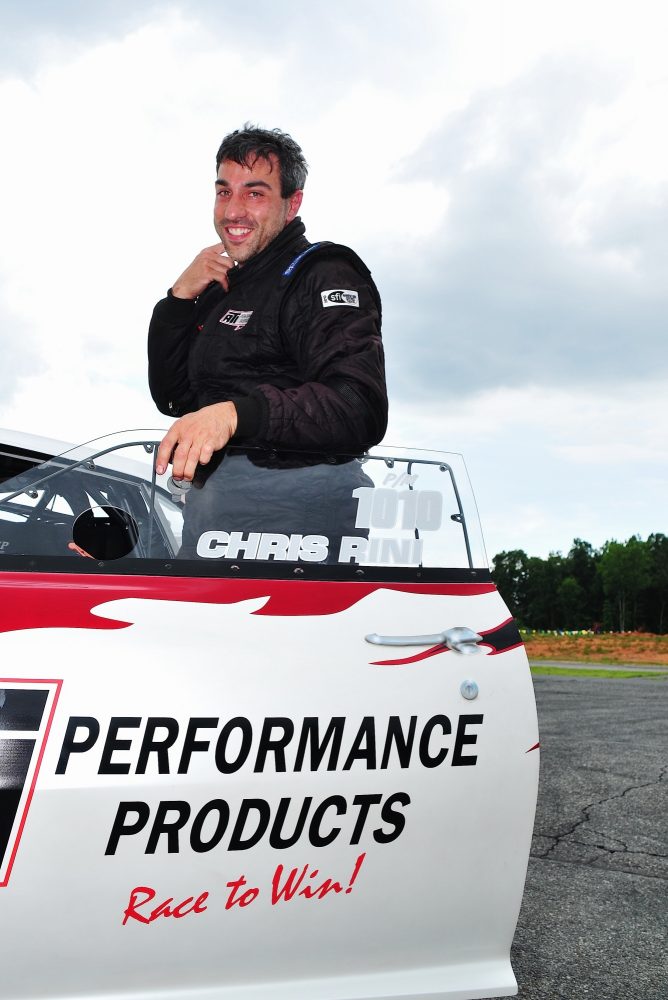 It just so happened that the Mopars at Englishtown car show was coming back to town about this time and since his Charger was absolutely pristine in appearance, Rini figured he’d display the car and maybe make a pass or two down the track, just to see what it would run. “I didn’t really have any friends who were into drag racing, so I was completely lost when it came time to enter the street class, stage the car and actually make a pass,” he reveals. “I had this Charlie Brown helmet, Simpson gloves and jacket with jeans and sneakers, and I’m struggling just to stage the car properly.”
It just so happened that the Mopars at Englishtown car show was coming back to town about this time and since his Charger was absolutely pristine in appearance, Rini figured he’d display the car and maybe make a pass or two down the track, just to see what it would run. “I didn’t really have any friends who were into drag racing, so I was completely lost when it came time to enter the street class, stage the car and actually make a pass,” he reveals. “I had this Charlie Brown helmet, Simpson gloves and jacket with jeans and sneakers, and I’m struggling just to stage the car properly.”
It’s ironic to imagine that one of the most successful racers in the northeast didn’t even make his first pass down a drag strip until he was 30 years old, but that’s exactly how things transpired for Rini. On his first pass ever, he clocked 14 seconds, spinning the tires like crazy. His second pass was much improved, stopping the clocks in 13.1 seconds, while on his third try he drove the classic Charger deep into the mid-12-second range. Then, in true drag racer fashion he blew up the transmission on his fourth and final run of the day.
“I was totally hooked on drag racing from the moment I made my first pass,” Rini declares. Of course, all he heard for the next few weeks was, “That’s all it ran?!” Rini admits he was completely peeved, so he went on a mission. “I couldn’t get on the phone fast enough, trying to find a performance transmission and tons of other stuff,” he says. “Other stuff” eventually included nitrous, upgraded heads and camshaft, along with a few suspension changes.
“The following year I had the car going 11.4s, but that wasn’t enough because this was like a crack addiction.” Eventually, after a multitude of upgrades, Rini clocked a best of 10.29 at New Jersey’s Island Dragway. “So now when I had the car on display at car shows I could whip out my time slip and say, ‘Yeah, I got a 10-second car alright!’”
For the same reason, though, Rini was later kicked out of three area drag strips since his car was going far too fast for the amount of safety equipment it carried. “This was a big, heavy car that weighed 4,125 pounds without me in it and it had nothing but a lap belt. No cage or any other safety equipment and I still just had my Simpson jacket, gloves and Charlie Brown helmet,” he says with yet another laugh at the memory. Soon enough, Rini says he wasn’t even allowed to so much as test and tune the car at any of the northeast drag strips due to safety concerns. “That’s when I started my search for my first official drag car, because there was no way I was going to cut up an original RT car,” he states.
His search led him to Georgia where he found a gorgeous 1970 Barracuda, a real head turner with its “Plum Crazy Purple” paint. It was a chrome-moly, square-tube chassis car, set up for a Mopar wedge motor with a three-speed Mopar transmission and Dana rear end. After ordering a 572 cubic inch powerplant from Indy Cylinder Heads, Rini drove 18 hours to Indiana just to see what kind of horsepower it would make on the dyno. “I was all in; I had the fever,” he says.
After dropping the motor in the Barracuda, he took the car to upstate New York’s Lebanon Valley Dragway to shake it down, clocking 9.10 on the car’s first full pull, then dipping into the high 8s on his second pass. “I was smiling from ear lobe to ear lobe for the entire two-hour-and-20-minute ride home,” he says.
The Barracuda should have made a fine bracket car; trouble was, Rini turned out to be completely terrible at dial-in style drag racing.
“I hated it. The only way I ever won a round was if the other guy broke,” he says. “I just couldn’t see being on a great pass and then looking over at the finish line and getting out of the throttle if I didn’t see my opponent. I was a terrible bracket racer because all I ever wanted to do was go fast!”
Before long, Rini had the ‘Cuda routinely clocking low-8-second passes and while it was fast, it still wasn’t fast enough. “I couldn’t quite qualify for the Quick 16, which was the top class in the Mopar circuit I was running,” he remembers.

By 2004, Rini admits his racing addiction had reached a fever pitch. That’s when he bought a Dodge Avenger that would’ve been ideally suited for the 8.90 index Super Comp class, but instead he pushed it to the limit and then some. The car eventually clocked an astounding 7.33 at 170 mph, or about a second and a half faster than it was ever meant to go. “It was all over the track, very inconsistent and rarely ever went straight. It was a real white-knuckle experience and to make matters worse, the 3-speed TorqueFlite transmission made for more work than you could ever imagine,” he says.
It was about this time that Rini realized he was reluctantly swimming against the tide because of his love for all things Mopar. “I was fighting it tooth and nail! There was no way I was putting a Powerglide in it; no way I was putting a GM tranny in my Mopar!”
Despite his emotional attachment, the Avenger was blowing up transmissions every few runs and even when it wasn’t, Rini says he was fighting the wheel just to keep the thing off the wall or centerline. “By this time I had become good friends with Dean Stevens, who also ran the Mopar circuit and he watched me killing myself working on this car at every event, so one day Dean says to me, ‘Have you ever driven a pro-built car?’” Rini admits to feeling puzzled. “What’s the big difference?” he asked.
Stevens encouraged Rini to make a pass in his Jerry Bickel-fabricated 2002 Dodge Neon, just to see if he could detect a difference for himself. Rini declined at first, but later agreed to make a pass in the car at the following event—and was immediately stunned with the results. “I clocked 6.98 in Dean’s Neon, which was the quickest I’d ever been. That car was smooth as glass, too, nothing like my Avenger,” he says.
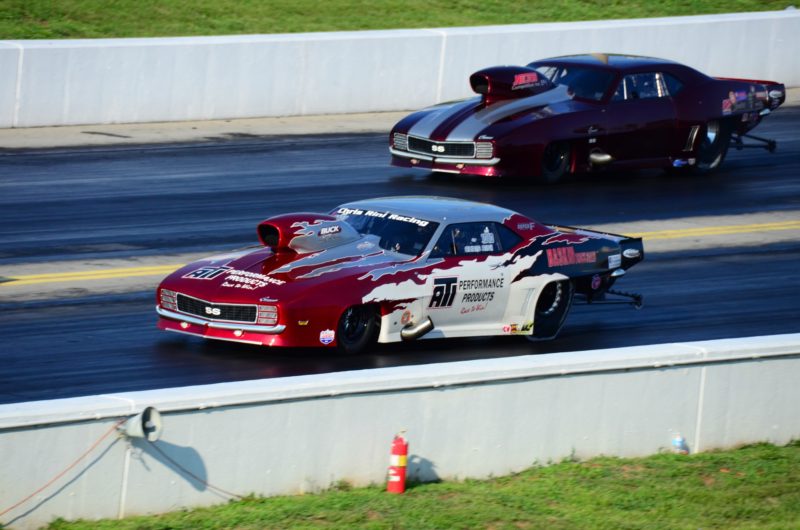 When Stevens put the car up for sale the following winter it came as no surprise that Rini was first in line. During the off-season he also ordered a 632 cubic inch motor and bolted it to a Powerglide while counting down the days until the 2005 season began. At his first race of the year, Rini drove his newly-purchased Neon to the runner-up spot, and then went to the semis at the following event. “I went to the Mopar Nationals at Columbus that year, which is like the U.S. Nationals of Mopar racing and I wound up winning the thing,” he describes, the excitement of the day still evident in his words. “It was the first race I ever won in my life and it was so cool.”
When Stevens put the car up for sale the following winter it came as no surprise that Rini was first in line. During the off-season he also ordered a 632 cubic inch motor and bolted it to a Powerglide while counting down the days until the 2005 season began. At his first race of the year, Rini drove his newly-purchased Neon to the runner-up spot, and then went to the semis at the following event. “I went to the Mopar Nationals at Columbus that year, which is like the U.S. Nationals of Mopar racing and I wound up winning the thing,” he describes, the excitement of the day still evident in his words. “It was the first race I ever won in my life and it was so cool.”
While indeed enjoying a breakout season, to Rini’s dismay, however, he was still breaking transmissions at an alarming rate. That’s when he made his first connection with ATI Performance Products, which eventually turned into a highly visible, long-term sponsorship agreement.
“It all started when Jim Beattie from ATI had his trailer parked at Lebanon Valley during a Top Sportsman race. I had two trannys and they were constantly on the mend—including that day,” Rini says, explaining that Beattie first fixed his primary transmission and then repaired the back-up that same day. Meanwhile, ATI had just introduced its new “Superglide 1” and Beattie quite naturally was singing its praises.
Still, Rini remained unconvinced to make the switch. “Jim finally says to me, ‘Put this tranny in your car and I’ll hold your check until you call and tell me it’s worth the money; then I’ll cash your check.’” Rini agreed to the terms and says that four races later the transmission hadn’t been out of the car even once. “That’s when I called Jim and said, ‘Cash the check!’”
From then on the partnership between Rini and ATI grew into a powerhouse combo. An ATI converter helped push Rini past the 200-mph barrier on the quarter mile and he eventually posted a then-career-best 6.76 at 211 mph later that year.
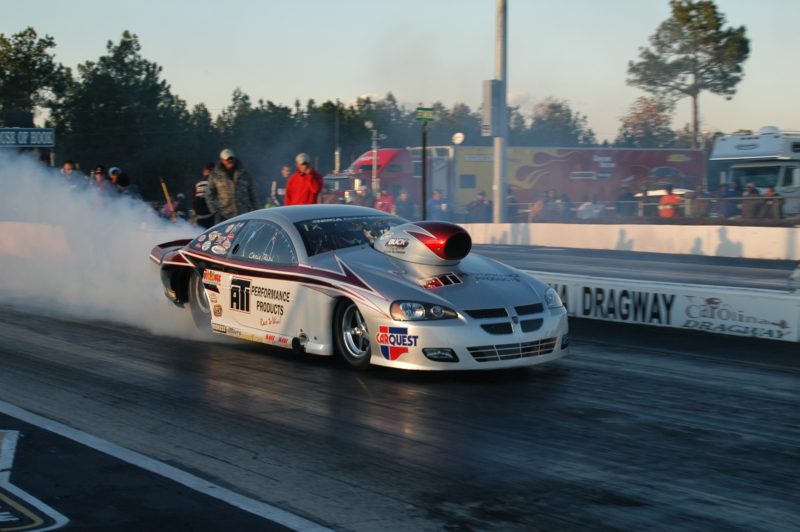
Rini eventually traded the car in on a brand-new 2007 Dodge Stratus from Jerry Bickel Race Cars. The new Stratus was killer on the quarter mile right out of the gate, and especially murderous in NMCA competition. It was, however, when Rini decided to try his luck on the eighth mile that he found himself right back at square one. He had become interested in Piedmont Dragway’s legendary, Thursday-night shootout known as Big Dog, held once a month at the North Carolina facility located just outside Greensboro. Some of the heaviest hitters in the doorslammer racing business hang out there and Rini admits to struggling mightily when he first came down from the north. “Struggling wasn’t the word; I was in the way!” he declares.
Nonetheless, he also clearly remembers receiving a heaping helping of southern hospitality when he met fellow racer David Lambert and his wife Rhonda. “Those two are the freaking best,” Rini states. “They barely knew me, but they invited me to keep my rig at their house so I didn’t have to drive it back and forth to New York after Big Dog.”
During this same timeframe, Rini also became acquainted with engine builder Charlie Buck of Buck Racing Engines in King, North Carolina. The two made fast friends and Buck built Rini a motor over the winter of 2008 and the results were impressive and immediate. Rini’s eighth-mile program completely blindsided more than a few folks when he showed up at the 2009 Big Dog season opener. “At my very first event with Charlie Buck on the scoop, I qualified number one, broke the Big Dog E.T. record and then won the race!”
Rini basically went from “being in the way” to leading the way; and almost no one saw it coming. “It just so happened there was a Mad Dawg race coming up at nearby Mooresville Dragway and when I told Charlie I wanted to stay in town and test for that event, he says, ‘What are you crazy?’” Upon Buck’s recommendation, Rini saved the motor and skipped testing, entering the Mooresville event and just like Big Dog a few days earlier he emerged victorious. “We came out like rock stars that weekend,” he remembers with a laugh.
Proving it was no fluke, Rini won a lot in 2009: several Big Dog races, NMCA Pro Street event titles and many other heads-up events he entered along the way. Rini closed out 2009 flying high, with big dreams of continuing to soar right on into the upcoming season. Amazingly though, just when he needed to be soaring the highest, he instead found himself onboard a jet plane that was rapidly falling out of the sky!
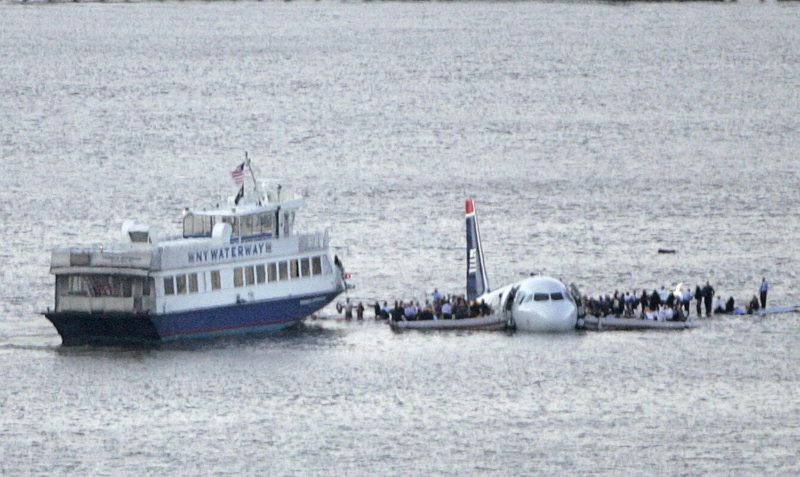
REUTERS/Gary Hershorn
Of all the places he could have been the morning of January 9, 2010, Rini was aboard U.S. Airways Flight 1549—the now infamous flight commonly known as the “Miracle on the Hudson.” He had been working long hours at the shop to tie up loose ends just so he could make this flight to Charlotte for the primary purpose of visiting Buck and being there to see his latest engine perform on the dyno. Exhausted, Rini says he was buckled in his seat and sound asleep even before the plane took off from New York’s LaGuardia Airport.
By now, it’s a well-documented fact that the plane struck a flock of Canadian Geese shortly after takeoff, disabling both engines. “I was awakened out of my sleep by the sound of an exploding engine, and then the kid sitting next to me says, ‘The engine is on fire!’” Rini says he was still trying to shake the cobwebs out of his head when he looked out the window and saw that sure enough the engine was in flames. “Nobody realized this at the time, but everyone on the right-hand side of the plane was looking out their window thinking that it was the right engine that had blown, while everyone on the left thought it was their engine that had exploded. Turns out, everybody was right,” he says with not a trace of irony in his voice.
Regardless, with both engines completely disabled and the congestion of New York City sprawled below, Captain Chesley B. “Sully” Sullenberger set about gliding the powerless aircraft toward the only clear space he could reach, the Hudson River, where he miraculously pulled off what is widely regarded as the most successful ditching in aviation history.
“All I could think about in the moments before we hit the water was how much pain I was getting ready to be in,” Rini says. “Right about then, in a monotone voice the captain says, ‘Brace for impact,’ so I put my hands on the seat in front of me and I’m clenching with everything I’ve got. I was expecting the wings to get ripped off and I figured we’d start tumbling, but instead, we hit the water, it skipped once and then turned just slightly before coming to a stop. The landing was remarkable! I kept looking down at myself to make sure I was really alive—and then almost instantly I felt water around my ankles. That’s when the chaos started.”
He remembers people climbing over seats, desperately trying to reach the emergency exits. The rear doors of the plane were stuck, so everyone turned around and started heading toward the front, when suddenly the side doors swung open and passengers began emptying out onto the wings. Rini says he was actually among the last few passengers to exit the plane and was standing on the wing when suddenly he remembered something he had left behind, his NMCA Championship jacket. But the water inside the plane had risen to a depth of roughly four feet, so Rini had to wade through the chilly waters, snatch the jacket, then return to the wing where a rescue raft had just arrived to take the first load of passengers into lower Manhattan. “It was a nice jacket and besides that, in the pocket I had an envelope full of money for Charlie Buck,” he says, laughing once more.
Once safely on the raft, Rini flipped open his cell phone and called his friend, Scott Cozzali, who was going to pick him up after he landed in Charlotte.
Rini was notorious for missing flights in those days, however, so Cozzali just figured this was just his most elaborate excuse yet for being late, so he promptly hung up when Rini delivered the news that his plane had crash landed on the Hudson.
Instead, Rini’s brother, Anthony, who lived nearby in Hoboken, New Jersey, came and picked Rini up from the Waterworks building and took him back home. “After I got home that night I drove over to the shop and just wandered around. I looked at some of my cars and I didn’t sleep for several days. That plane crash changed my perspective on things. I had a lot of loose ends, both in my personal life and with other things I had always intended on finishing, but had never done so.
“For example, I actually had another project car, a 1970 Challenger TA that I bought when I was 18 and had planned to restore, but just hadn’t yet. Let me tell you something, a week after I went down in that plane, fixing that car suddenly became a priority.”
Rini says he even took on a passionate new outlook toward his drag racing. He started mixing things up like never before; he even bought a Chevy! “My current Camaro is the first Chevy ‘anything’ I’ve ever owned in my life and it was honestly a hard thing to digest,” he roars with laughter. “I’m a Mopar guy to the core, but my 1969 Bickel Camaro has a nice sleek body, it was the perfect length and the correct weight, and in drag racing the body is just a carbon fiber replica anyway. It’s just a tool to win the race, so I’m still able to love Mopar, regardless.”
Naturally, Rini put his Camaro in the winner’s circle in short order and went on to win championships with the car, just as he had done with the Stratus before. In addition to capturing the NMCA Pro Street Championship twice in his career thus far, he has 11 total Big Dog trophies to his credit, as well as the 2012 Big Dog Championship.
Rini also has been victorious within the ranks of the Extreme Outlaw Pro Mod series, but perhaps most impressive of all has been his dominance of the “Battle of the Big Dawgs” at Carolina Dragway, an outlaw event that Rini won three years in a row, from 2011 to 2013. The Mike Hill-promoted events at the Jackson, South Carolina, facility not only represent the richest purses in all of Pro Nitrous racing; they’re also largely outlaw in format, so Rini’s trio of consecutive victories speaks volumes about his extraordinary competitiveness, as well as his dedicated race team.
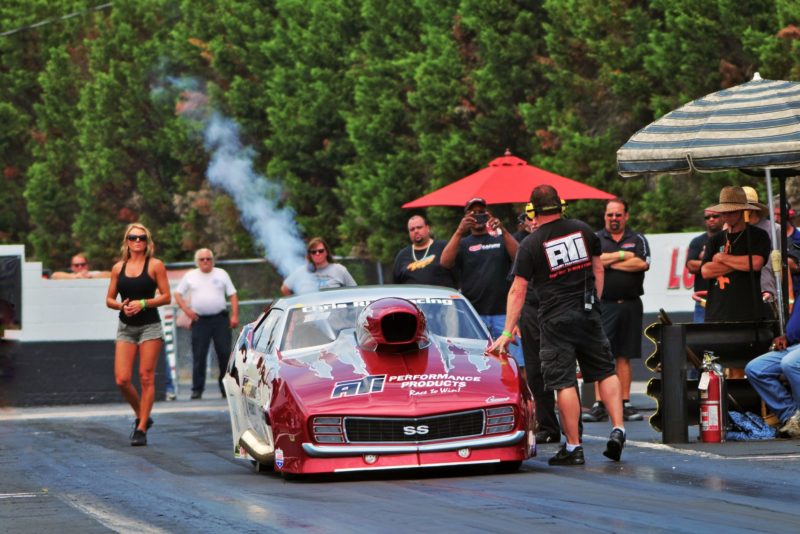
Eventually, other sponsors took notice of his star power and followed ATI’s support of Chris Rini Racing, including Carquest Auto Parts, Lithium Pro Batteries and new sponsor ProFabrication Headers. Rini closed out last season with a strong finish in the legendary Snowbird Nationals at Florida’s Bradenton Motorsports Park when he went to the Pro Mod final against Todd Tutterow and as the 2015 season began, Rini felt geared up and ready to perform once more.
At a time when many other racers are unveiling brand-new powerplants, Rini was just as eager to continue tweaking his Buck Racing 880 cubic incher, a piece that has already motivated his Camaro to a career-best lap of 3.76 seconds at 199.60 mph last season in PDRA Pro Nitrous at Virginia Motorsports Park.
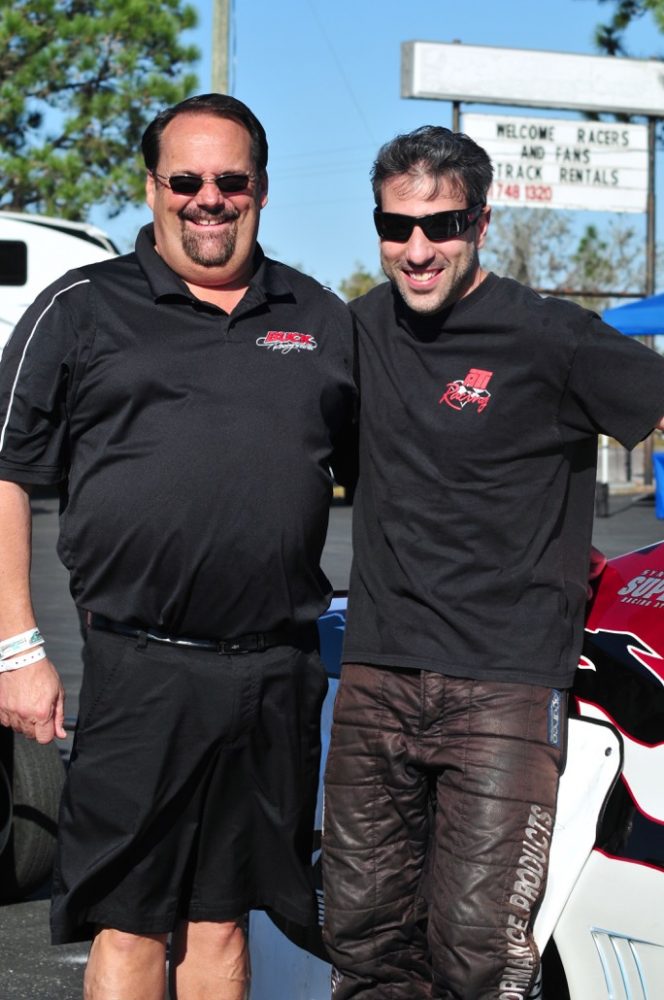
Charlie Buck and Chris Rini
“That engine was developed in the middle of 2014 and I think it’s still got some great untapped potential,” Rini says. After five PDRA races this year, Rini qualified at all four he’s attended and sat 11th in Pro Nitrous points at the halfway point of the scheduled 10-event season.
“It’s gonna’ be a busy season and I’m excited about running the entire Big Dog series at Piedmont Dragway, as well as some PDRA and EOPM events,” Rini says. He also plans a return to his quarter-mile roots this year at several NMCA events, including Bradenton and Atlanta. “I haven’t run quarter mile in a couple years, so it should be exciting to do that again,” he says.
Through it all, Rini keeps winning races regardless of the brand of car he’s wheeling or what configuration of fire-breathing behemoth motor Charlie Buck builds for him. For Rini, he’s always game for any challenge at any venue and more often than not he’ll find a way to come out on top.
And he continues gravitating toward the southland, both toward racing and the woman he loves. “My girlfriend, Emily, has changed my outlook on life,” he smiles. Meanwhile, Buck and his wife, Robin, even gave Rini a room in their house when they realized they weren’t getting rid of him! “They’re my adopted parents; only I adopted them instead of the other way around,” Rini laughs. They joke about their relationship, but Rini and his engine builder are tight. “Chris is a great guy and he’s worked hard for everything he’s got, nobody gave him anything,” Buck says.
At the drag strips down south they’ve even nicknamed Rini the “Northern Assassin,” which is quite comical considering Rini is actually counting the days until he permanently hangs his hat in Dixie. “One of these days I’m gonna’ surprise ’em and move down there. Don’t know what they’ll call me then,” he says, you guessed it, laughing.
Photographs by Van Abernethy and Ian Tocher


